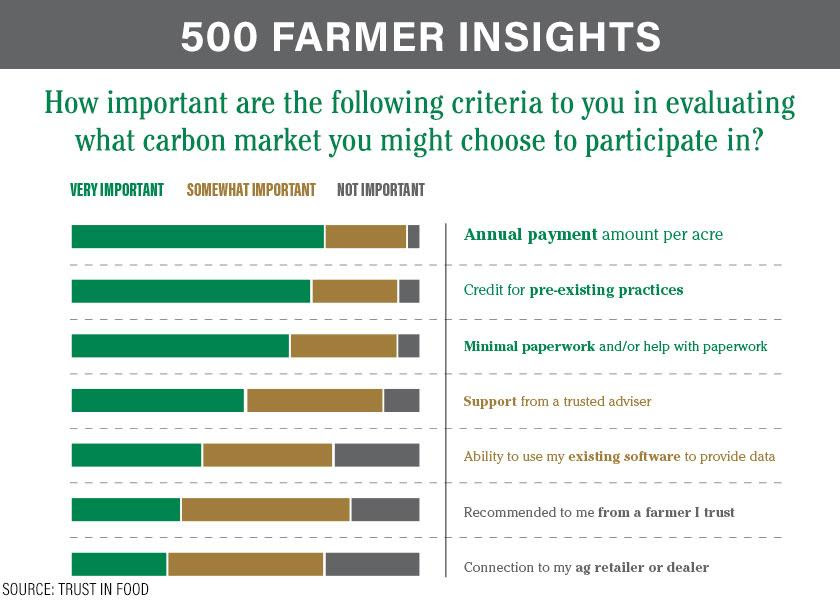|
News Bits
The USDA's national good to excellent ratings for corn and soybeans moved lower last week. That is due to another week of hot, dry weather in parts of the Midwest and Plains, in addition to excessive rain leading to flooding in parts of the Eastern Corn Belt.
As of Sunday, 58% of the U.S. corn crop is called good to excellent, 3% less than last week, with 90% of the crop silking, compared to the five-year average of 93%, 45% at the dough making stage, compared to 49% on average, and 6% of the crop dented, compared to 9% on average.
59% of soybeans are in good to excellent condition, down 1%, with 89% blooming, compared to 88% normally in early August, and 61% at the pod setting stage, compared to 66% on average.
86% of winter wheat has been harvested, compared to 91% on average.
64% of spring wheat is rated good to excellent, a drop of 6%, with 9% of that crop harvested, compared to the five-year average of 19%.
31% of cotton is in good to excellent shape, a decrease of 7%, with 95% squaring, compared to the typical rate of 93%, 69% setting bolls, compared to 64% on average, and 9% of those bolls opening, matching the usual pace.
74% of the U.S. rice crop is reported as good to excellent, 1% higher, with 69% headed, compared to the average of 765, and 5% harvested, compared to 7% on average.
24% of U.S. pastures and rangelands are in good to excellent condition, 1% below a week ago.
Source: National Sorghum Growers Association
House Agriculture Committee Ranking Republican Member Rep. Glenn 'GT' Thompson (R-PA), Vice Republican Leader, Rep. Rick Crawford (R-AR), and the Ranking Republican Member of each Subcommittee, penned a letter to Committee Chairman David Scott (D-GA) urging the Committee to schedule a hearing with Environmental Protection Agency (EPA) Administrator Michael Regan regarding the agency's handling of crop protection products.
"The Biden EPA has already made steps towards restricting or canceling chlorpyrifos, Enlist, glyphosate, atrazine, sulfoxaflor, DCPA, diuron, organophosphates, neonicotinoids, and many more," the lawmakers write.
"This has eroded public trust in the regulatory process and is undermining confidence in the scientific integrity of the EPA."
To read the letter click here.
France Forms Crisis Unit to Face Worst Drought on Record
The French government activated a crisis unit to deal with the worst drought on record, and warned conditions could get worse.
The inter-ministerial task force will coordinate water supply to areas most affected and track the drought’s impact on energy production and agriculture, the office of Prime Minister Elisabeth Borne said Friday. Borne’s office also urged people to conserve water and said restrictions will continue to be put in place where necessary to prioritize health needs, security and drinking water supply.
The situation, which follows a hot, dry spring, has led the government to enforce water restrictions in 93 out of the 96 administrative regions known as departments.
More than 100 towns are without drinking water, a government minister said Friday. Water-saving measures include a ban on irrigation for farmland.
“This drought is the worst ever recorded in our country,” Borne’s office said in a statement. “The lack of rain is aggravated by the accumulation of successive heat waves which reinforce evaporation and water needs.”
France’s corn crop probably will drop 19% this year because of the hot, dry weather, the Agriculture Ministry said Friday.
The crisis is “a tragedy for our farmers, our ecosystems and for biodiversity,” according to the prime minister’s statement. Weather forecasts suggest the drought could last another two weeks and become “even more concerning,” Borne’s office said. The country just had its driest July in decades.
On Monday, EPA submitted a petition to the Ninth Circuit Court of Appeals requesting a partial rehearing of the three-judge panel’s June 17 ruling on the glyphosate interim decision. In that ruling, the panel vacated the interim decision’s human health risk assessment and sent back the ecological risk assessment to EPA to complete an Endangered Species Act analysis by October 1. It is regarding this remand of the ecological portion of the interim decision for which EPA is seeking a partial rehearing.
In its earlier ruling, the court panel directed EPA to issue a new ecological risk assessment, presumably including a finalized ESA analysis, by October 1. However, in its request for a partial rehearing, EPA points out that to finalize an ESA consultation is a multi-year process, for which the panel granted EPA only 106 days. Additionally, finalizing an ESA consultation requires EPA to coordinate with both the Fish and Wildlife Service and the National Marine Fisheries Service, neither of which are parties to the lawsuit or are subject to the court’s order. As a result, EPA cannot comply with the court’s order, as it relies on cooperation from parties outside of EPA’s control.
EPA requested that the court grant the rehearing to, preferably, consider lifting the October 1 deadline. If the court is unwilling to do so, the agency requested the court vacate the interim decision in its entirety since it cannot comply with the order as it stands. EPA also suggested it may withdraw the ecological portion of the interim decision if the court does not lift the deadline or vacate the interim decision.
The American Soybean Association is party to the litigation and is continuing to carefully monitor the case for developments. Additionally, ASA is regularly seeking additional advocacy opportunities to protect grower access to glyphosate and other vital crop protection tools.
|
 90% OF FARMERS WON'T JOIN CARBON MARKETS WITHOUT CHANGES
90% OF FARMERS WON'T JOIN CARBON MARKETS WITHOUT CHANGES 90% OF FARMERS WON'T JOIN CARBON MARKETS WITHOUT CHANGES
90% OF FARMERS WON'T JOIN CARBON MARKETS WITHOUT CHANGES